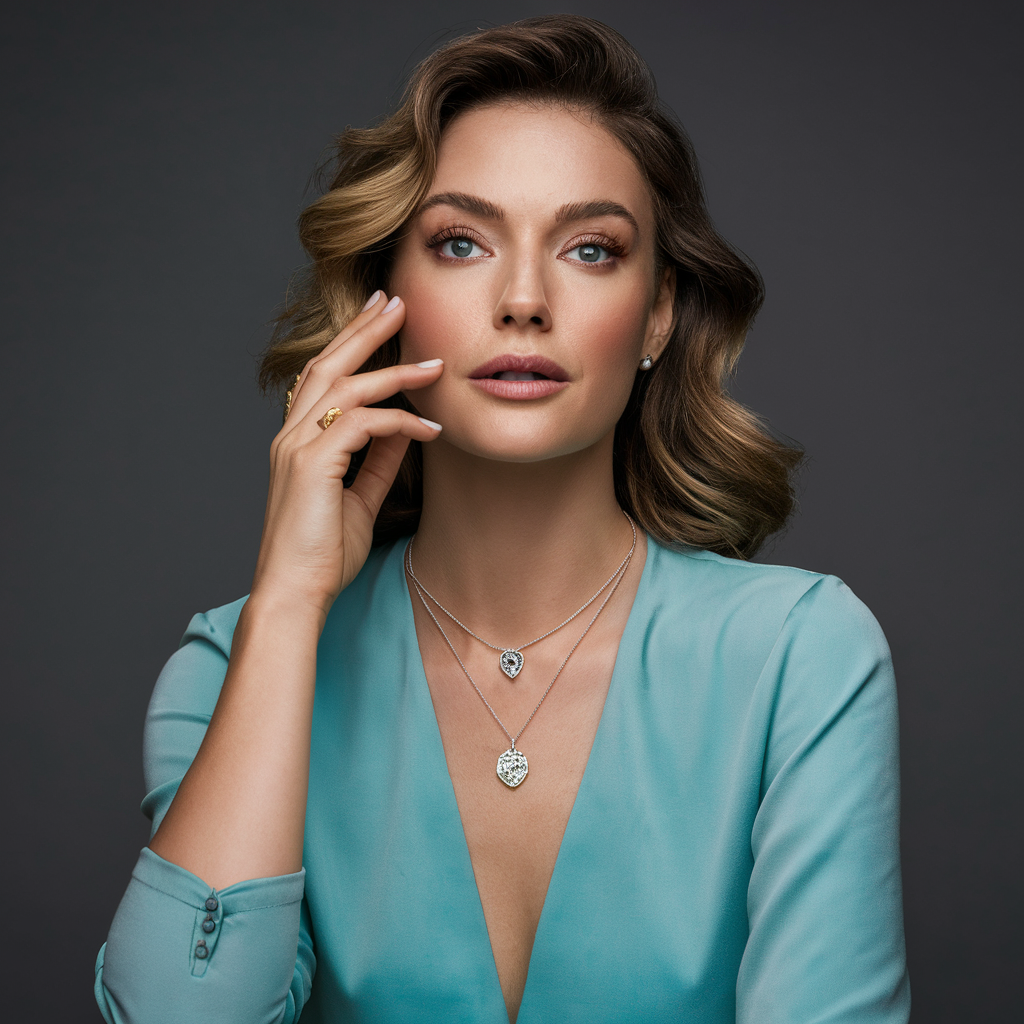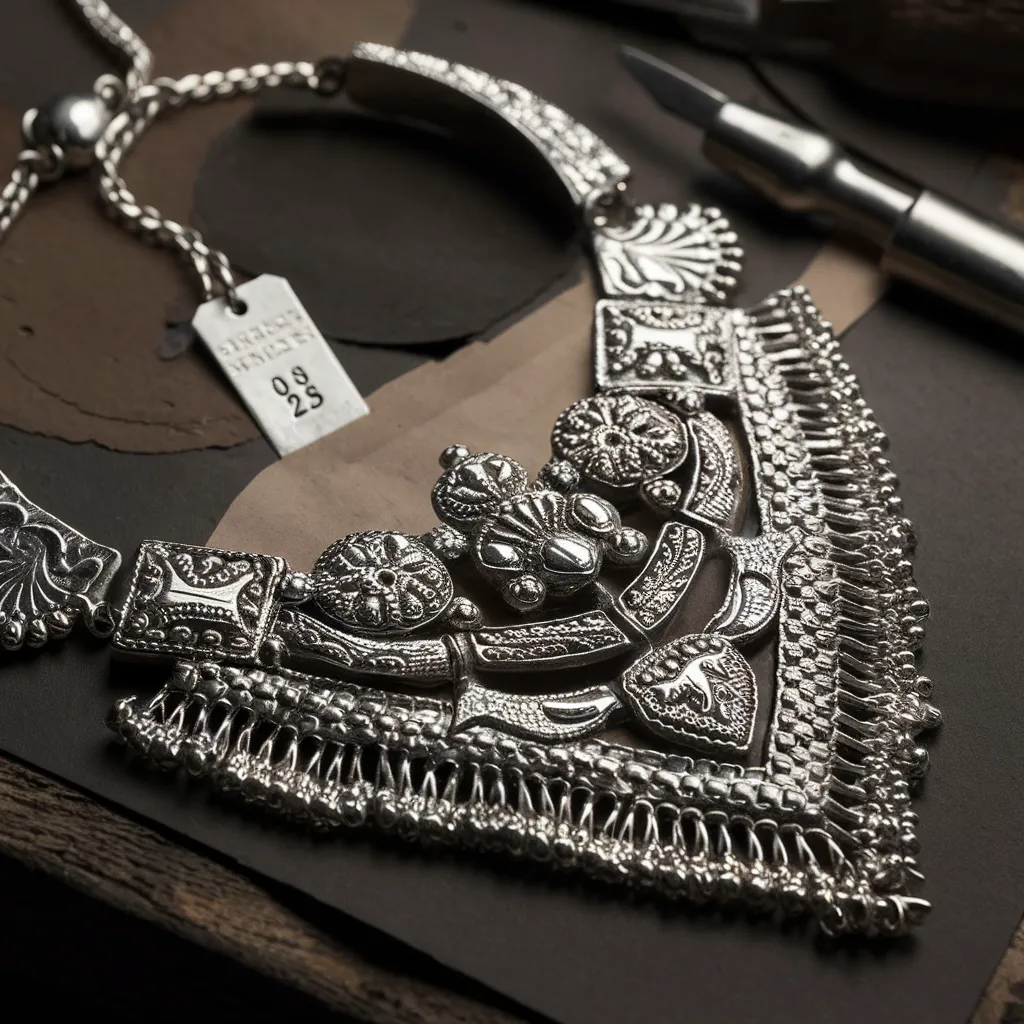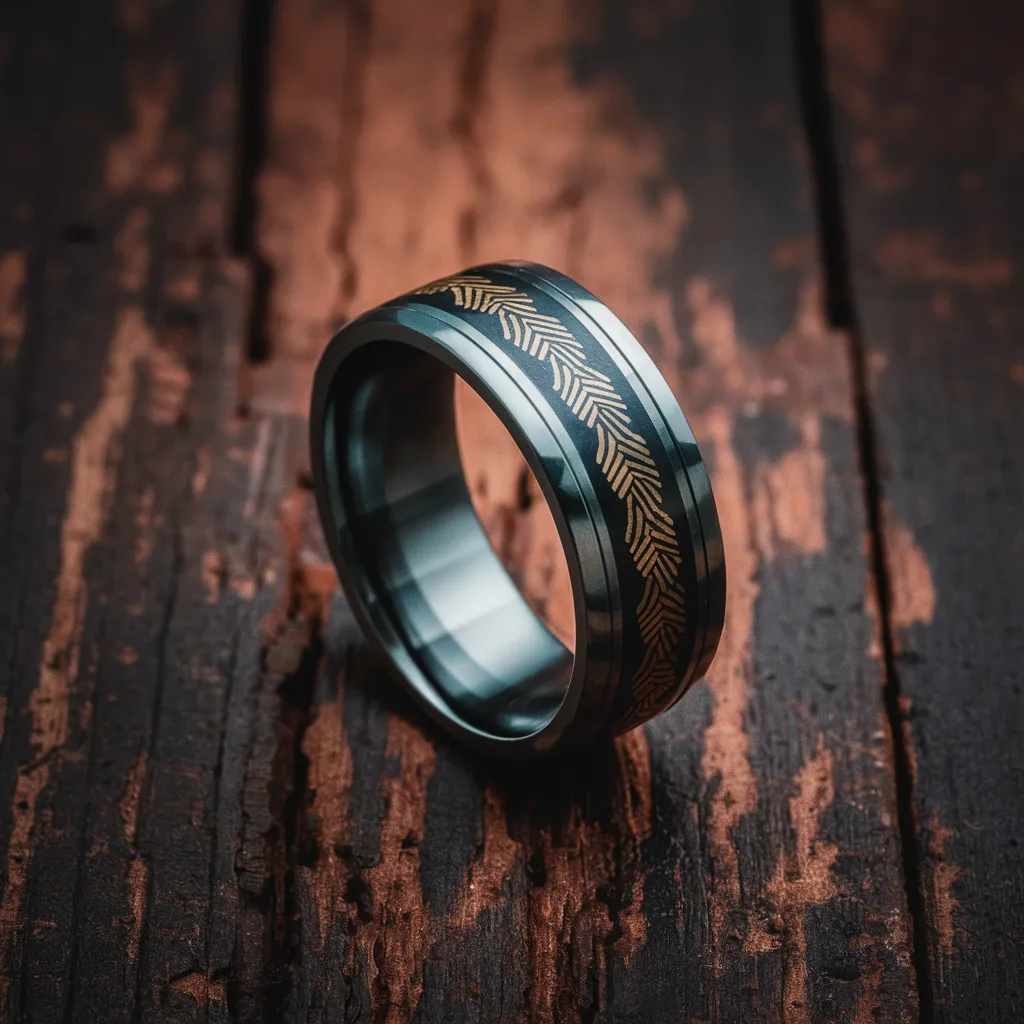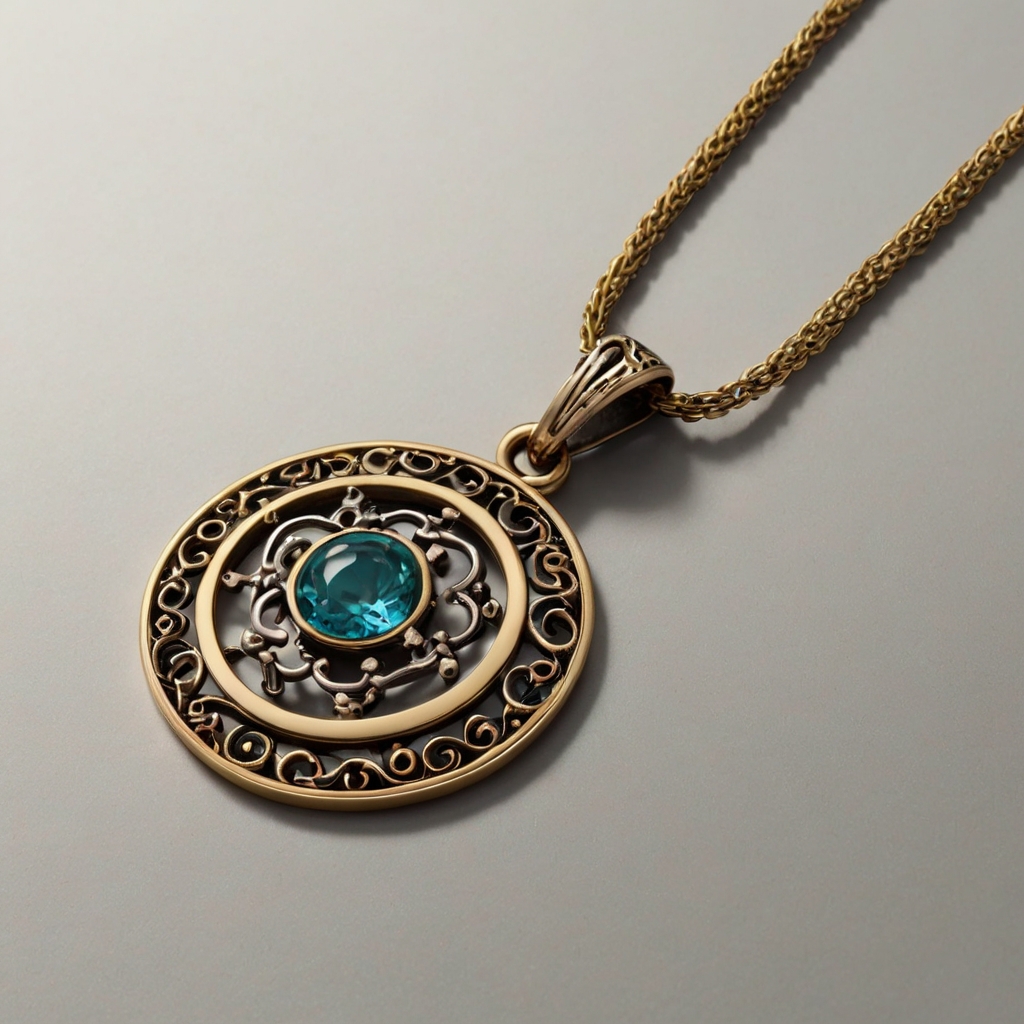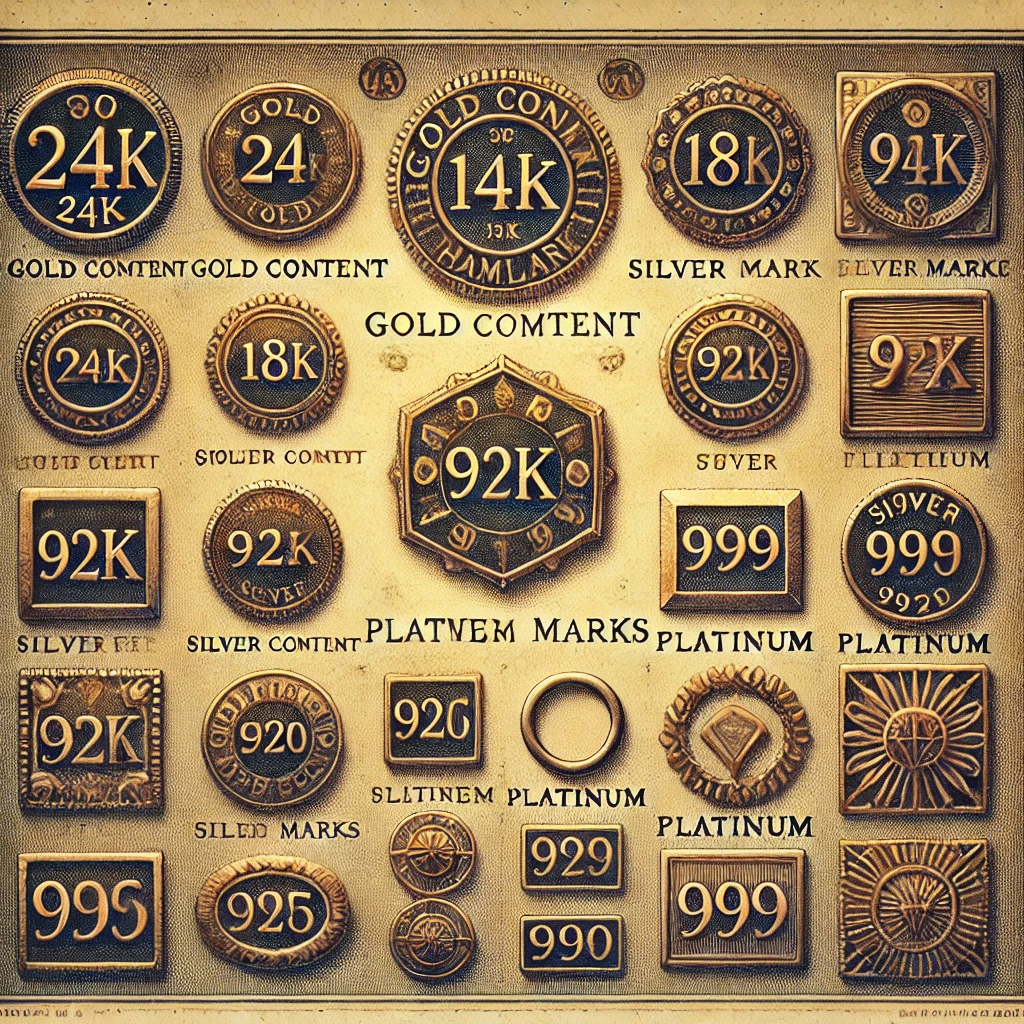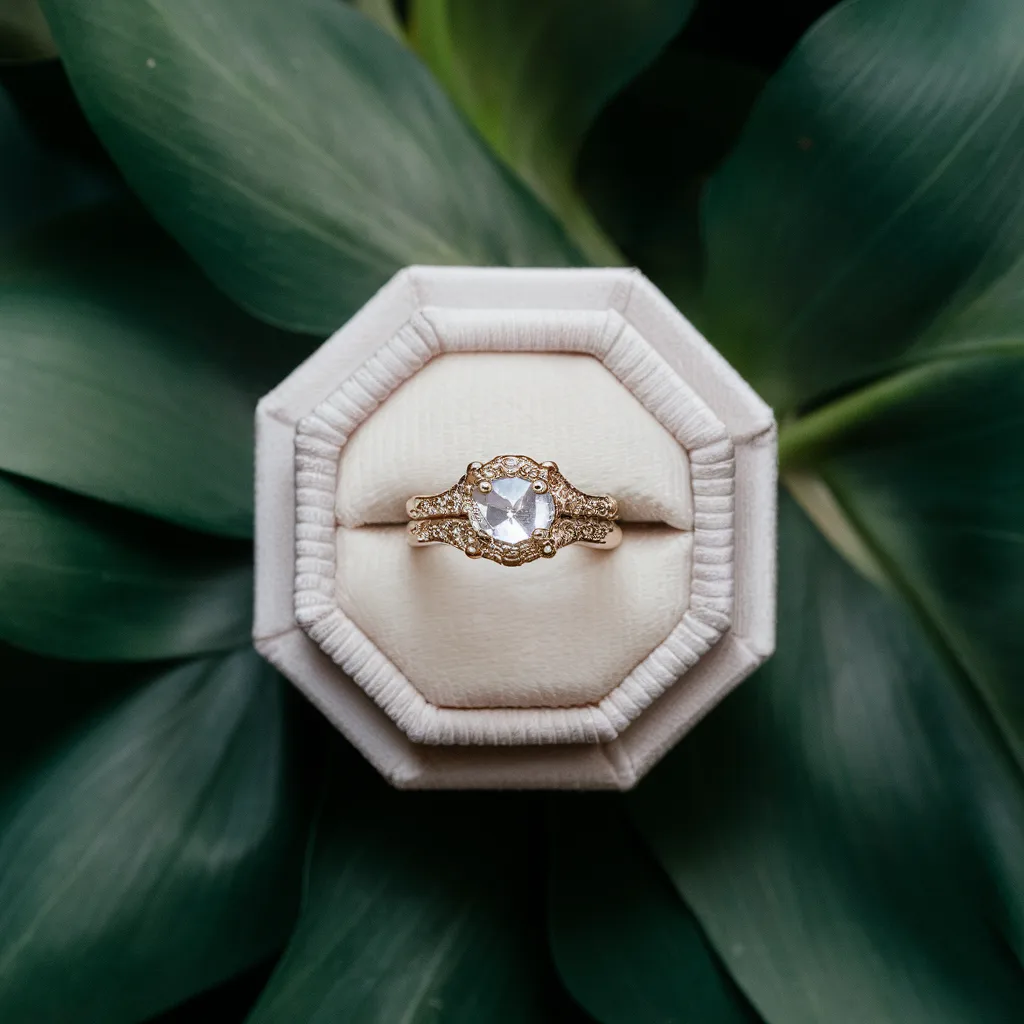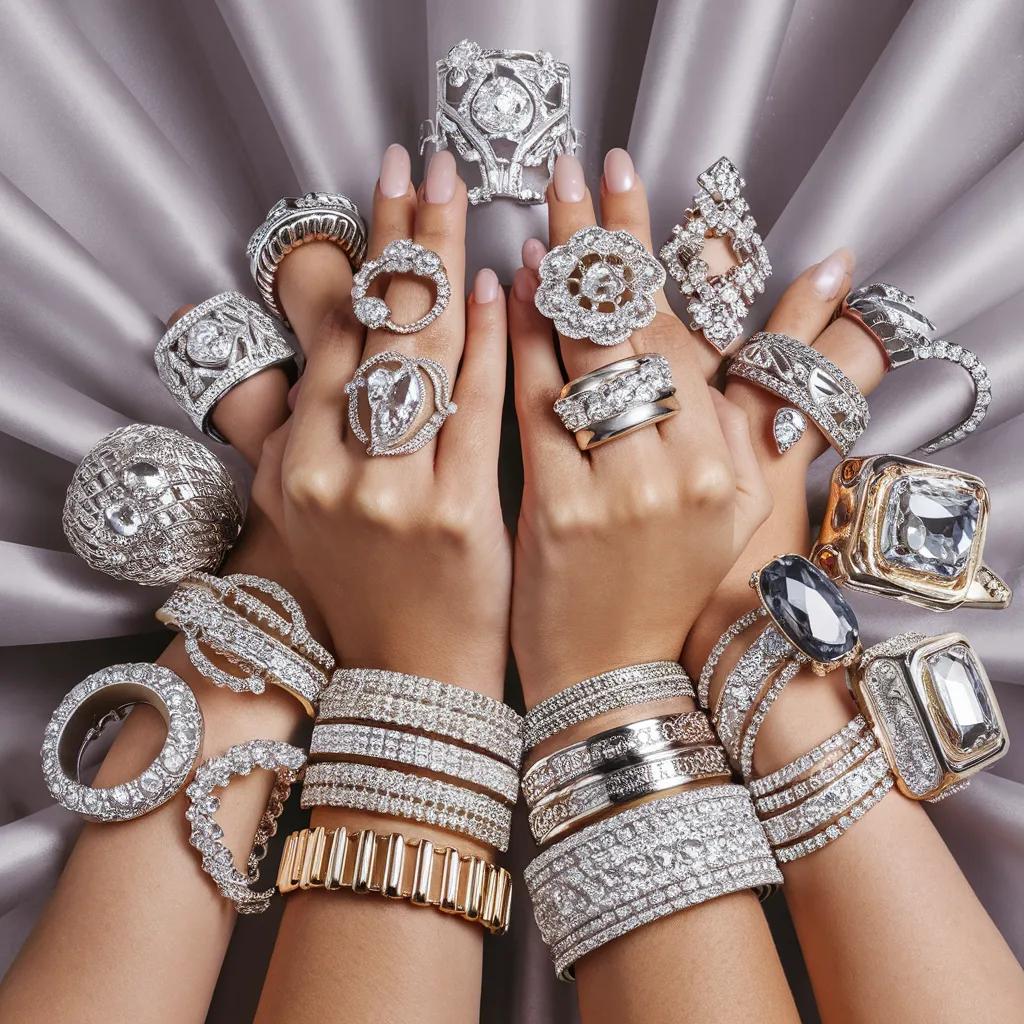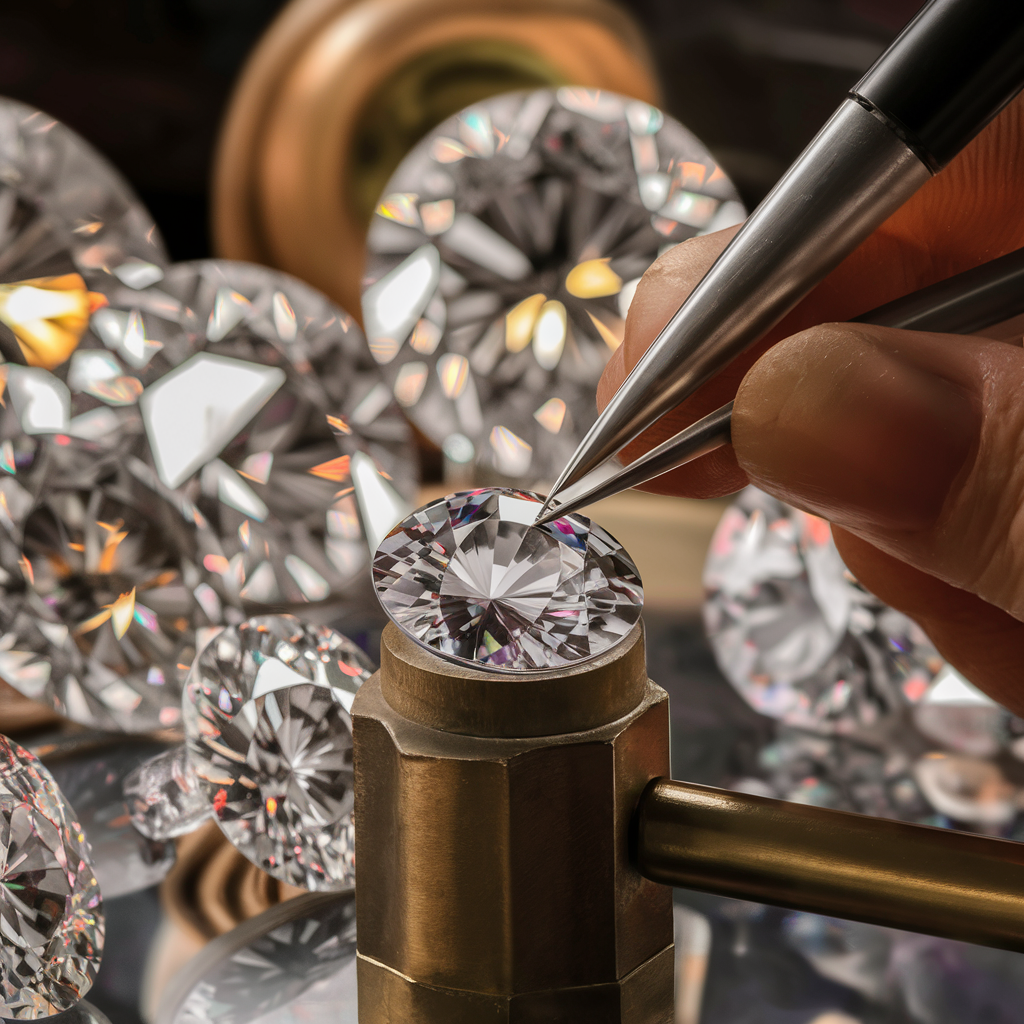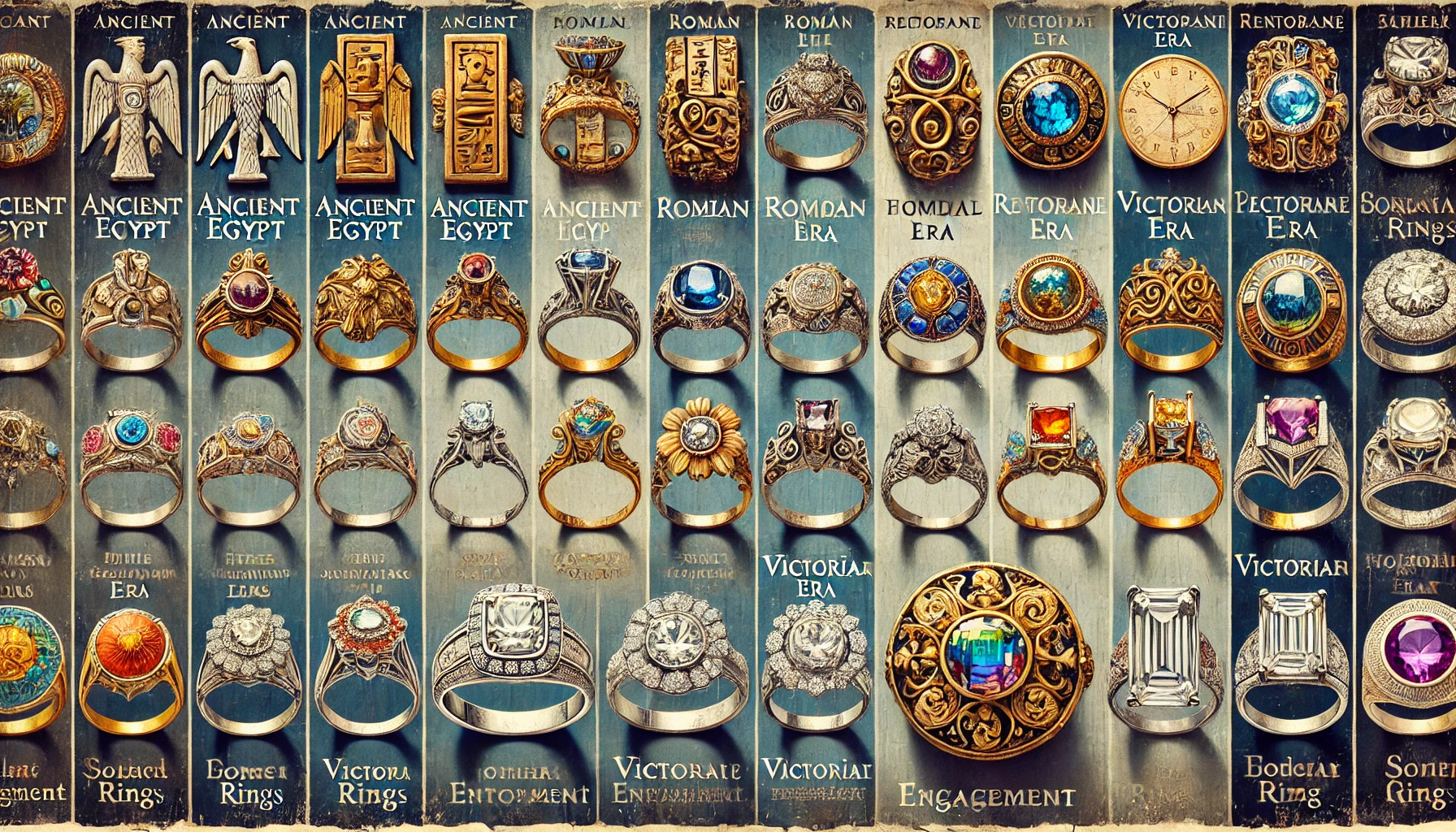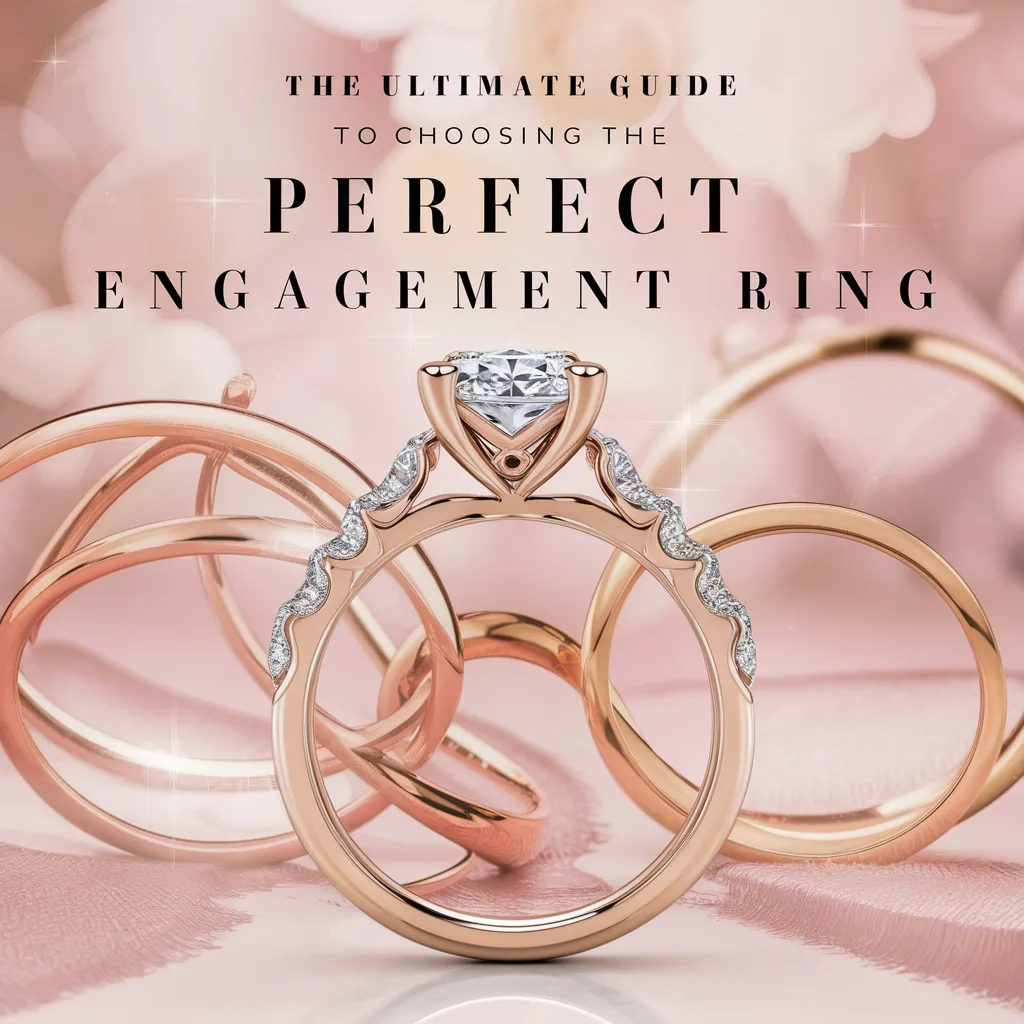
The Ultimate Guide to Choosing the Perfect Engagement Ring
Understanding the 4 Cs
The 4 Cs—carat, cut, color, and clarity—are the fundamental criteria used to evaluate a diamond's quality and value. Understanding these characteristics will help you make an informed decision when selecting a diamond.
Carat
Carat refers to the weight of the diamond. Larger diamonds are rarer and thus more expensive, but carat weight alone does not determine a diamond's value. It's essential to consider the other Cs as well.
Cut
Cut is arguably the most crucial of the 4 Cs. It determines how well the diamond reflects light, which affects its brilliance and sparkle. A well-cut diamond will appear more dazzling and radiant. The cut is graded from Excellent to Poor.
Color
Color refers to the presence of color in a diamond. The Gemological Institute of America (GIA) grades diamonds on a scale from D (colorless) to Z (light yellow). Colorless diamonds are the most valuable, but near-colorless diamonds (G-J) offer excellent value without noticeable color to the naked eye.
Clarity
Clarity measures the presence of internal or external imperfections, known as inclusions and blemishes. The GIA grades clarity from Flawless (no inclusions or blemishes visible under 10x magnification) to Included (inclusions visible to the naked eye). Most inclusions are microscopic and do not affect the diamond's beauty.
Choosing the Right Setting
The setting of an engagement ring not only secures the diamond but also significantly influences the ring's overall appearance. Here are some popular setting styles to consider:
Solitaire
The solitaire setting features a single diamond, making it the centerpiece of the ring. This classic and timeless style emphasizes the diamond's brilliance and is the most popular choice for engagement rings.
Halo
The halo setting surrounds the central diamond with a ring of smaller diamonds, enhancing its size and sparkle. This style is perfect for those who want extra brilliance and a touch of glamour.
Three-Stone
The three-stone setting represents the past, present, and future of your relationship. It features three diamonds or gemstones of varying sizes, symbolizing your journey together.
Pavé
The pavé setting features small diamonds set closely together along the band, creating a continuous sparkle. This setting adds extra glitter and is perfect for those who love a bit of sparkle.
Bezel
The bezel setting encircles the diamond with a metal rim, offering a sleek and modern look. It provides excellent protection for the diamond and is ideal for active individuals.
Selecting the Metal
The metal of the band is another crucial aspect of an engagement ring. Each metal has its unique properties and aesthetics:
Platinum
Platinum is known for its durability, hypoallergenic properties, and natural white sheen. It is the most expensive metal but offers a luxurious and timeless look.
White Gold
White gold offers a similar look to platinum but at a lower cost. It is typically alloyed with other metals and coated with rhodium for added shine and durability. However, it may require periodic re-plating.
Yellow Gold
Yellow gold is a traditional and timeless choice. Its warm and classic appearance is achieved by alloying pure gold with metals like copper and zinc. It is available in various karat weights, with 18K and 14K being the most popular.
Rose Gold
Rose gold is trendy and romantic, with a pinkish hue created by alloying gold with copper. It offers a vintage yet contemporary look and is often chosen for its unique and warm color.
Customization Options
For a truly unique engagement ring, consider customization. Many jewelers offer bespoke services that allow you to design a ring tailored to your partner's preferences and your vision. Here are some customization options to consider:
Engraving
Personalize your ring with an engraving. This could be a special date, initials, or a meaningful message that adds a personal touch to the ring.
Unique Designs
Work with a jeweler to create a unique design that reflects your partner's style. This could include incorporating colored gemstones, intricate details, or unconventional settings.
Mixed Metals
Combine different metals to create a mixed metal ring. This adds a modern twist and allows you to incorporate various colors and textures.
Custom Cuts
Choose a custom-cut diamond or gemstone to make your ring stand out. Unique cuts like pear, marquise, or heart shapes add an extra level of individuality.
Determining Ring Size
Determining the correct ring size can be tricky, especially if you want to keep the proposal a surprise. Here are some tips to help you find the right size:
Borrow a Ring
Borrow a ring that your partner wears on the same finger and take it to a jeweler for sizing. This is one of the most accurate methods.
Ask Friends or Family
Enlist the help of friends or family members who might know your partner's ring size. They can also subtly ask for you without raising suspicion.
Trace a Ring
Trace the inside of a ring your partner wears on a piece of paper and take it to a jeweler. This can give them a rough estimate of the size.
Use a Ring Sizer
Purchase a ring sizer online and have your partner try it on. This can be a fun and interactive way to find the right size together.
Staying Within Your Budget
While it's tempting to go all out, it's essential to set a budget and stick to it. The price of the ring is not a measure of your love. Here are some tips to help you stay within your budget:
Prioritize the 4 Cs
Decide which of the 4 Cs is most important to you and allocate your budget accordingly. For example, if brilliance is your priority, focus on the cut quality.
Consider Alternative Stones
Consider using alternative stones like moissanite, sapphires, or lab-grown diamonds. They offer beautiful and affordable options that can still be stunning.
Shop During Sales
Look for sales and promotions at jewelry stores. Many retailers offer discounts during holidays or special events.
Choose a Simple Setting
Opt for a simpler setting to allocate more of your budget to the diamond. A classic solitaire setting is timeless and allows the diamond to shine.
Trends in Engagement Rings
Staying updated with the latest trends can help you choose a ring that is both stylish and timeless. Here are some current trends in engagement rings:
Vintage Rings
Vintage rings feature intricate designs and details from past eras. They offer a unique and timeless charm that never goes out of style.
Colored Gemstones
Colored gemstones like sapphires, emeralds, and rubies are becoming increasingly popular as center stones. They add a pop of color and a unique touch to the ring.
Minimalist Designs
Minimalist designs focus on simplicity and elegance. These rings often feature clean lines and a single, beautiful stone, making them perfect for modern brides.
Sustainable Rings
Sustainable rings are made with ethically sourced diamonds and recycled metals. They are perfect for environmentally conscious couples who want a ring that reflects their values.
Conclusion
Choosing the perfect engagement ring is a significant and meaningful decision. By understanding the 4 Cs, selecting the right setting and metal, considering customization options, and staying within your budget, you can find a ring that beautifully symbolizes your love and commitment. Remember, the most important aspect of an engagement ring is the thought and love behind it. With this guide, you're well-equipped to make a choice that will be cherished for a lifetime.

